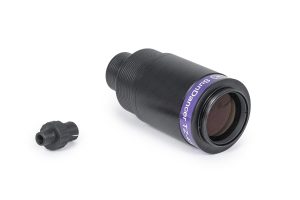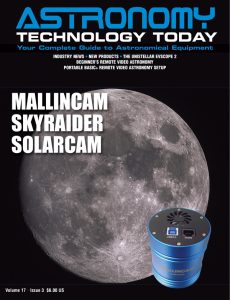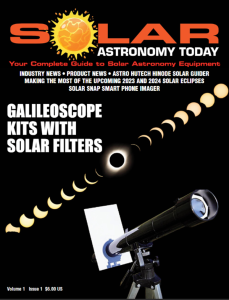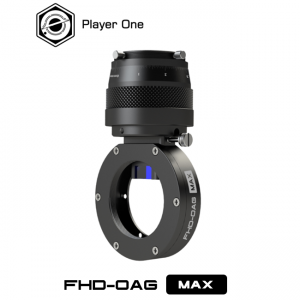The new Baader SunDancer II Telecentric System TZ-4S was specially developed for the Baader SunDancer II H-alpha filter and replaces the original Baader 3x telecentric system after a simple conversion of the blocking filter. It offers new functionality that allows the SunDancer II H-alpha filter to also be operated on telescopes of f/7-f/8 with an optimal aperture ratio of around f/30.
 For H-alpha filters up to 36mm in diameter with their own blocking and energy protection filters (e.g. SolarSpectrum filters), the TZ-4S can be used instead of the long telecentric system TZ-4 (four times the focal length). As an achromatic system, it can also be used instead of a Barlow lens to extend the focal length, for example for planetary photography.
For H-alpha filters up to 36mm in diameter with their own blocking and energy protection filters (e.g. SolarSpectrum filters), the TZ-4S can be used instead of the long telecentric system TZ-4 (four times the focal length). As an achromatic system, it can also be used instead of a Barlow lens to extend the focal length, for example for planetary photography.
As the Baader team notes, “Telecentric systems are mainly used with H-alpha filters for solar observation, in which the etalon in the H-alpha filter, which is plane-parallel to 1/100 lambda, requires a perfectly parallelized beam path over the entire image. These telecentrics provide very sharp images, but are usually only optimized for the H-alpha wavelength. The achromatic Baader SunDancer II Telecentric System TZ-4S is calculated for the entire visible spectrum and can therefore not only be used on H-alpha systems, but also on the TZ-4S. The Baader SunDancer II telecentric system TZ-3S can also be used instead of a Barlow lens.
They continued, “Due to the parallel beam path, it is very good-natured in terms of the working distance. While the magnification factor of a Barlow lens changes with the distance to the eyepiece or camera (zoom eyepieces are also based on this principle), the magnification factor and image quality of the TZ-4S do not change, even when the camera or eyepiece is mounted well past the design working distance (97mm from the bottom of the T-2 connector thread).”
The achromatic SunDancer II TZ-4S illuminates a field of view of 36mm at a distance of 97mm from the base body. The contrast is better than with simple Barlows or the eyepiece projection that is often used for high magnifications. With the 4x telecentric system, the necessary high visual magnifications can also be achieved together with long focal length orthoscopic eyepieces. The interpupillary distance of the eyepieces used does not change. When using the 2″ plug-in connection, the focus position only changes outwards by 3mm compared to a 2″ eyepiece.
The telescope-side connection is made via a dual 1.25″ – 2″ socket with safety kerfs (these prevent tilting due to an incorrectly seated safety groove and at the same time enable a secure hold). On the camera side, the T-2 thread offers a secure, non-tilting connection, even with heavy cameras, or to T-2 eyepiece clamps. For the T-2 thread, extension rings are available for almost all common connections.
You can learn more about the Baader SunDancer II Telecentric System TZ-4S here.

 And to make it easier for you to get the most extensive news, articles and reviews that are only available in the magazine pages of Astronomy Technology Today, we are offering a 1-year magazine subscription for only $6! Or, for an even better deal, we are offering 2 years for only $9. Click here to get these deals which only will be available for a very limited time. You can also check out a free sample issue here.
And to make it easier for you to get the most extensive news, articles and reviews that are only available in the magazine pages of Astronomy Technology Today, we are offering a 1-year magazine subscription for only $6! Or, for an even better deal, we are offering 2 years for only $9. Click here to get these deals which only will be available for a very limited time. You can also check out a free sample issue here.
The Sun is more active than it’s been in years and if that’s not enough, we have the Annular Solar Eclipse on October 14, 2023 and the Total Solar Eclipse on April 8, 2024! If you’d like to learn more about the technology behind solar observing, solar imaging and more, you can check out our new monthly magazine – Solar Astronomy Today. It’s free to read, no subscription needed and available here. And if you are preparing for the upcoming eclipses and want to know your equipment options from solar glasses to the most out of this world solar viewing and imaging options, check out our free publication – The Definitive Guide to Viewing and Imaging the Sun – simply click here and enjoy reading!



